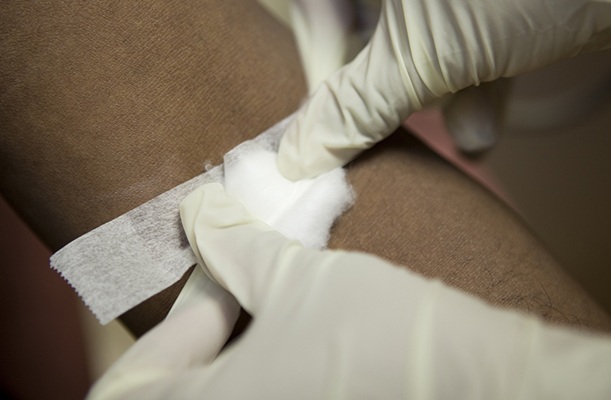Rapid Test Distinguishes Types of Malaria
By LabMedica International staff writers
Posted on 08 Sep 2017
Malaria is a leading cause of death for children living in Sub-Saharan Africa and many children in rural areas seek care at local community health clinics, but these clinics lack reliable tests to distinguish severe and uncomplicated malaria.Posted on 08 Sep 2017
The diagnosis of malaria was traditionally was made using Giemsa-stained blood smears, but rapid diagnostic tests are now widely used. The potential of using a low-cost, routinely available rapid diagnostic test to distinguish between severe and uncomplicated malaria in children has been investigated.
![Image: The dual-band (histidine-rich protein-2/pan-lactate dehydrogenase [HRP2/pLDH]) rapid diagnostic test (RDT) to differentiate uncomplicated from severe malaria (Photo courtesy of Standard Diagnostics). Image: The dual-band (histidine-rich protein-2/pan-lactate dehydrogenase [HRP2/pLDH]) rapid diagnostic test (RDT) to differentiate uncomplicated from severe malaria (Photo courtesy of Standard Diagnostics).](https://globetechcdn.com/mobile_labmedica/images/stories/articles/article_images/2017-09-08/RLJ-298.jpg)
Image: The dual-band (histidine-rich protein-2/pan-lactate dehydrogenase [HRP2/pLDH]) rapid diagnostic test (RDT) to differentiate uncomplicated from severe malaria (Photo courtesy of Standard Diagnostics).
Scientists at the University of North Carolina at Chapel Hill (NC, USA) and their colleagues performed a prospective, observational cohort study, to assess the accuracy of a dual-band (histidine-rich protein-2/pan-lactate dehydrogenase [HRP2/pLDH]) rapid diagnostic test (RDT) to differentiate uncomplicated from severe malaria. A total of 2,678 children with fever from Western Uganda underwent testing for malaria using a rapid diagnostic test.
The scientist found that nearly half tested positive for malaria and 83 satisfied criteria for severe malaria. The sensitivity and specificity of the rapid diagnostic test for detecting severe malaria was 97.6% and 75.6%, respectively. The test was especially sensitive for children less than five years of age. Knowing when a child is suffering from severe malaria allows for a referral to a health center better equipped to handle the disease's grave manifestations. An HRP2+/pLDH+ result was significantly more sensitive (97.6% versus 68.7%) for the detection of severe malaria compared to algorithms that incorporate screening for danger signs.
The authors concluded that a positive dual-antigen (HRP2/pLDH) RDT has higher sensitivity than the use of clinical manifestations to detect severe malaria, making it a promising tool in the triage of children with malaria in low-resource settings. Ross Boyce, MD, MSc, the lead author of the study said, “Rapid diagnostic tests have been around for a while, and are generally considered standard of care in most malaria-endemic settings. However, what we've done is show that these relatively simple tests can be used in new ways to provide important information beyond just a positive or negative result.” The study was published on August 24, 2017, in the journal Clinical Infectious Diseases.
Related Links:
University of North Carolina at Chapel Hill














